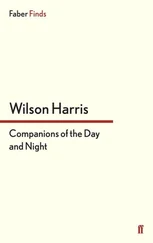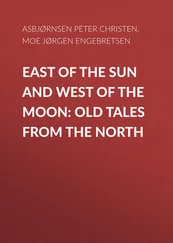Juba was a historian, ethnographer, and client king of the Romans, and he concentrated his report On Arabia for Gaius Caesar on southern Mesopotamia, Arabia, and the coasts of the Persian Gulf and Red Sea, now known through Pliny the Elder’s Natural History ( FGrH 275, especially F1–3, 30–34). Isidorus’s report, Parthian Stations ( Stathmoi Parthikoi ), is possibly the summary of a longer description, the Guidebook of Parthia ( Parthias Periēgētikon ) (Schoff 1914: 17). 9It is preserved in the late thirteenth-century Codex Parisinus suppl. gr. 443 and Codex Parisinus gr. 571 (Diller 1952: 19–20, 30; 46–47 10) and like the bematists’ writings it describes the route and stations for a west-to-east journey. Isidorus reveals the continuity of Persian routes and stations and the eastern Hellenistic cities up to the first century CE, as well as the current geopolitical situation. Of the regions surveyed, he describes Mesopotamia in the greatest detail, tracing a route from Zeugma down the east side of the Euphrates through Anthemousia to Ichnai and Nikephorion, back across the Euphrates, down its west bank to Dura-Europos, and weaving across the river valley to Seleucia on the Tigris. In mapping this particular route Isidorus revealed to his Roman patrons the ramifications of new Parthian dominance in the Euphrates valley. Isidorus’s contemporary Strabo, writing only a decade or so earlier, represents an earlier situation in his description (16.1.27–28) of a very different highway across the desert, taken by merchants enjoying friendship with the desert nomads and wishing to avoid the higher tariffs exacted by local chieftains controlling the Euphrates river valley. By Isidorus’s time of writing the Parthians had enforced use of the older and longer Hellenistic route around the Fertile Crescent, so as to collect the tolls, an important source of income for their empire (Gawlikowski 1994: 27, 31). When Strabo produced a revised edition of his Geography around 18 CE he did not update the Parthian material (Roseman 2005: 28 n.9): Strabo’s first edition appeared in 7 BCE, and a revised edition in 18 CE, and he did not use Agrippa’s map as evidence, which fits with the earlier date since the map was not finished in 7 BCE.
Isidorus gives detailed information for the routes and stations across Mesopotamia and Babylonia as far as the Tigris, observing the locations and names of villages and cities (always called poleis ), and noting where there are royal stathmoi , as at the fortress Alagma near Ichnai and at Thillada Mirrada, and which cities are Greek, namely Anthemousia, Ichnai, Nikephorion, Dura-Europos ( FGrH 781 F2 §1). Beyond Seleucia on the Tigris were two relatively densely populated regions, Apolloniatis and Chalonitis, with a noticeable Greek presence, so they also receive more attention. Isidorus describes both as containing a number of villages and Greek (Artemita and Chala) and non-Greek (Chalasar) cities ( FGrH 781 F2 §§2–3). Once into Media, the route stretches out over longer distances, with fewer cities and villages mentioned; Isidorus continues to name the cities, some of which are Greek, and indicates the presence of stathmoi , but few of his western audience can have expected to venture this far. Indeed we may wonder how much of this route Isidorus himself traveled (cf. Fraser 1996: 91–92). The key to understanding Isidorus’s text, as with all the Greco-Roman geographies, is to consider its purpose. Isidorus conducted his survey of Parthia for political reasons, not scientific, and so he focuses upon cities, structures, and terrain of significance to the Augustan leadership, enumerating the Greek cities still flourishing under Parthian rule, the location of fortresses and “royal” stathmoi (presumably large enough to furnish a rest stop for an army or expeditionary force), and the disposition of civilian habitations and strategic river crossings (Millar 1998a: 120–121). All of these are what a Roman contingent would need to know in order to gather local intelligence effectively and manage their encounters with Parthian forces.
We know from Pliny ( HN 5.83, 6.40) that Domitius Corbulo’s expedition to Armenia for Nero produced some new measurements for the upper Euphrates and Caspian region. For evidence of later expeditions and geographic surveys during the resurgence of Roman campaigns against the Parthians under Trajan and Hadrian, the main source is Ptolemy’s Geographikē hyphēgēsis (or, Guide to Drawing the World , conventionally titled Geography ) (Berggren and Jones 2000: 4). We have the name of one Syrian, Maes Titianus, who ventured along the Silk Road as far as the Stone Tower (Tashkurgan, Xinjiang) and supplied Ptolemy with 876 schoinoi (26,280 stades) as the land distance from the Euphrates to Stone Tower (Ptol. Geog . 1.11.3). Maes sought to trade directly with the Chinese silk merchants whose wares normally passed to the avid Roman market via Parthian traders (Ptol. Geog . 1.11.7), and he is typically dated to c. 100–110 CE, based on the date of Marinus of Tyre, who used him as a source and in turn served as main source on the Near East for Ptolemy (Cary 1956: 130–134). Cary suggested that Maes’s journey might have been earlier, in the Augustan period under the auspices of Agrippa, when the way through Parthia was clear and Roman interest in geography and the far-east trade were both high, but the evidence for this is inconclusive. A more recent study (Heil and Schulz 2015: 74) points out that Maes himself probably did not travel, but reported measurements taken by his employees. Marinus produced a world map and accompanying commentaries before 110 CE, and Ptolemy (fl. 120–150 CE), as with Strabo’s treatment of Eratosthenes, based his Geography on Marinus’s work, adding various criticisms and corrections (Ptol. Geog . 1.6ff.; cf. Berggren and Jones 2000: 23–25).
Unless a geographical text is explicitly associated with an expedition it is difficult to determine whether geographical writers actually traveled the lands they describe or relied on other reports. A few sources from the later Roman period do show that new itineraries and maps were produced for and as a result of travel in the Near East. Several seventh- to twelfth-century manuscripts provide the texts of the Itinerarium provinciarum Antonini Augusti and Imperatoris Antonini Augusti itinerarium maritimum , two lists of land and sea routes around the Roman Empire for the third century CE, colloquially called the Antonine Itinerary . The land itinerary originated with the expedition of Caracalla (M. Aurelius Antoninus) to Egypt in 214–215 CE, based on the longest route listed in the text, from Rome to Hierasycaminos, Egypt via Asia Minor and Syria, and subsequent emperors added routes as was needed, at least until Diocletian in the 290s (Cuntz 1929: iv–v; Dilke 1985: 125; Löhberg 2006: 7ff; for the route from Rome to Hierasycaminos (now under Lake Nassar): ItAnt 124,8–162,4). A few routes are provided for the Near East, including the Syrian leg of the long Rome-to-Egypt route which passes through Tarsus, Mopsuestia, Alexandria ad Issum, Antioch, Laodicea, Byblos, Berytus, Tyre, Sidon, Caesarea, Raphia, Pelusium (in addition to many other smaller cities), and on to Alexandria ( ItAnt 145,6–154,5 (Löhberg)). Inland the itinerary is divided into several shorter routes between major centers: Germanica through Zeugma or Samosata to Edessa ( ItAnt 184,1–185,3 and 188,7–189,5 (via Zeugma), 186,1–187,1 (via Samosata)), Antiochia to Emesa ( ItAnt 187,2–188,3), Carrhae to Hierapolis/Bambyke ( ItAnt 192,4–193,1), Cyrrhus to Emesa ( ItAnt 193,2–194,6), Eumari through Damascus and Scythopolis to Neapolis ( ItAnt 195,9–197,4), and from Neapolis through Aelia Capitolina (Jerusalem) to Askalon on the coast ( ItAnt 199,11–200,3). A pilgrim itinerary from 333 CE, the Itinerarium Burdigalense (Codex Parisinus 4808), delineates another route along the coast from Antiochia to Caesarea, then inland through Scythopolis and Neapolis to Jerusalem (Geyer 1898: iv–viii; ItBurg 581,4–589,6 (Cuntz)).
Читать дальше












